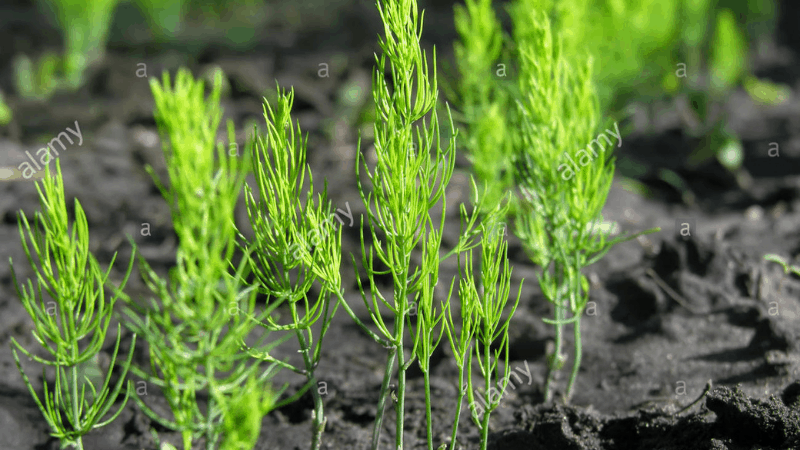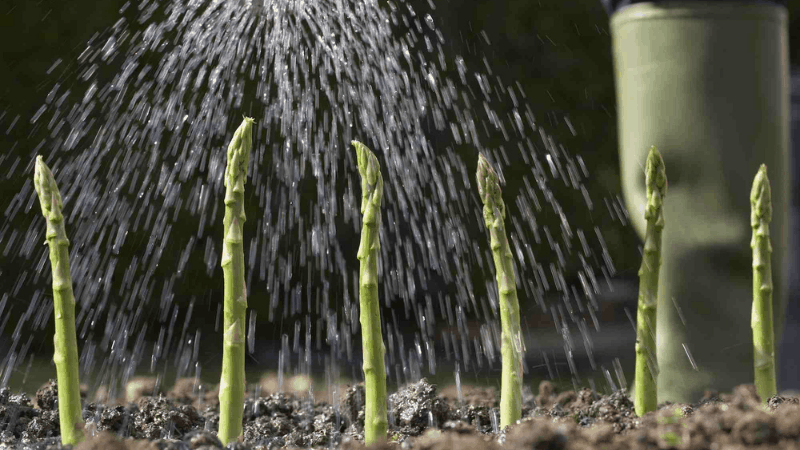Can You Grow Asparagus From Cuttings? How to Grow Asparagus From Cuttings?
by Lee Safin
Propagating a genre from the cutting is a passion to most gardeners. But there are many genres of trees that do not get optimal growth if you are trying the propagation from cutting.
Can You Grow Asparagus From Cuttings?
You can grow asparagus from cuttings. Find out a young root of 12 inches and cut it at a 45-degree angle to get the perfect column of the asparagus. If you can manage a soil having a pH of 7.0 to 7.2 you can easily propagate asparagus from cuttings.
Contents
- Can You Grow Asparagus From Cuttings?
- What Are The Brightest Sides of The Process?
- What Are We Loosing In This Process?
- What Are The Conditions Required To Grow Asparagus?
- How to Cut the Asparagus to Propagate From Cuttings?
- How to Take Care of The an Asparagus Plant?
- Can I Propagate Asparagus Fern in Water?
- What Can You Not Plant Next To Asparagus?
- When Do Asparagus Spears Go Thin?
- What Is The Good Fertilizer For Asparagus?
- How often Should I Water My Asparagus?
- Wrapping Up

Can You Grow Asparagus From Cuttings?
As we already said, you can grow asparagus from cuttings. Find out a young root of 12 inches and cut it at a 45-degree angle to get the perfect column of the asparagus. If you can manage a soil having a pH of 7.0 to 7.2 you can easily propagate asparagus from cuttings.
By following six easy steps you can definitely propagate asparagus from cutting.
But growing asparagus from cutting is not an easy process. However, if you are diligent with your care and attention to detail, it can be done!
Here we will teach you all about the ins and outs of growing asparagus from cuttings indoors or in a greenhouse.
What Are The Brightest Sides of The Process?
You won’t have to buy plants at the nursery since they are grown on-site. However, no need for chemical fertilizers/pesticides required because natural practices used instead like composting and mulching which help keep pests away without unnecessary harm to the environment.
What Are We Loosing In This Process?
It requires patience and time to grow. It can take up to three years from cutting before the first harvest.
What Are The Conditions Required To Grow Asparagus?

Asparagus needs a long growing season of at least 100 frost-free days to produce shoots. It needs full sun and well-drained soil. However, the pH factor of the soil plays a vital role in the propagation process. A minimum decrease in the soil pH level can change the growth process.
To control the diseases we must keep the exposure level of the sun enough.
How to Cut the Asparagus to Propagate From Cuttings?
Step One


Cutting asparagus is actually quite easy. You will need a sharp knife and to give the cutting an angle by holding it at 45 degrees. This allows for all of the cells in your stem to split evenly so that you can get more than one plant from each cutting.
If you are interested to know “how to sharpen the blade“, check this article.
Step Two
Cut off about 12 inches of young shoots with a sharp blade held at a 45-degree angle.
Step Three
Now slice down into base leaving approximately ¾ inch stub behind on either side of the stalk. In this way, plenty of new roots are formed!
Step Four
Now take fresh soil or compost and fill up the hole created when slicing through with two fingers deep, pressing firmly into the dirt until ends meet again. You need a perfect soil condition having a pH of 7.0 to 7.2.
Step Five


After that, take a clear plastic bag and put it around the cutting as best you can. Then cover with moist dirt up to the top of the bag.
Step Six
Now place in an area where it will get plenty of water but not too much sun exposure. This is especially important if you live in a cold climate! After all the leaves die back from fall through winter, your plant should start sprouting new growth by mid-March or early April.
How to Take Care of The an Asparagus Plant?
Taking care of an asparagus plant is one of the most vital parts. Propagating asparagus from cutting may look easy but maintaining it is quite difficult.
Irrigate Properly


Irrigation is the most vital feature of taking care of an asparagus plant. Without the proper amount of water supply, the growth of the asparagus may hamper. Especially when you are propagating asparagus from cuttings.
Stop The Weeds From Coming


We recommend this weed killer as the best weed killer for asparagus.
The formation of weeds is a nightmare for most gardeners. But when you are propagating asparagus from cuttings, it’s more devastating.
To stop the weeds from coming frequently you check the linked article “how to get rid of weeds forever.”
However, if you are concerned to know about the best weed killers for gravel, check the linked article.
Use A Grade Fertilizer


We recommend this fertilizer as the best fertilizer for asparagus.
Fertilizer helps plants to grow with their full potential. When the soil condition is declining the fertilizers push the minerals of the soil to provide optimum growth. Using the A-grade fertilizer is important in this case especially when you are growing asparagus from cuttings.
Maintain The Proper Pest Control


Spiders are one of the most dangerous predators which are harmful to the growth of the asparagus. However, other insects are equally harmful especially when you are growing asparagus from cuttings. To stop the spider mites to come, check our latest article on “how to get rid of spider mites.”
Can I Propagate Asparagus Fern in Water?
You can not propagate asparagus fern in water without the healthy seeds of the asparagus fern. In most places of the world, the asparagus fern is known as an invasive weed. Cutting is one of the most popular ways of propagating asparagus but it’s not a good method to propagate asparagus fern.


One of the most effective ways of propagating Asparagus fern in water is by division of the plant. When you see that the plant is growing you can divide the plants and can place them in a new pot. Remember, each pot should contain enough root, stems, and leaves. You can use any kind of sharp scissors to divide the plants from the mother plant.
What Can You Not Plant Next To Asparagus?
You can not any kind of Alliums like garlic, leeks, or onion. However, you should not try to grow potatoes either next to Asparagus. But that does not mean that you can not grow them in the same area. Just you can not share the soil bed.
When Do Asparagus Spears Go Thin?
Due to four selective reasons, the Asparagus spears can go thin. Unseemly age, un-benefiting feeding, inappropriate depth, and improper care. These are the four ultimate reasons why Asparagus spears go thin. Some minor issues like soil pH and pest control issues also can make your Asparagus spears thin.
Unseemly Age

Harvesting Asparagus at a young age can make your Asparagus spears go thin. Especially within the first three years, you should not harvest the asparagus.
Un-benefiting Feeding


If you do not feed the young Asparagus properly, you may encounter this issue.
Inappropriate Depth
Make sure that you put them at least three to five inches in depth.
Improper Care
Asparagus is like a cat, they need attention. If you do not give proper attention then the Asparagus will show poor propagation.
What Is The Good Fertilizer For Asparagus?


Fertilizers containing equal amounts of nitrogen, potassium, and phosphorus are the best for Asparagus. It would be better if you apply the fertilizer in early spring or in the late summer. Some gardeners apply fertilizers on asparagus in spring continuously which diminishes the ultimate growth of the Asparagus.
How often Should I Water My Asparagus?

Asparagus is a water-consuming plant. When you are growing a young Asparagus, give them 1 liter of water regularly. After two growing seasons, you should give 500 ml of water regularly. Watering an old Asparagus is critical.
There is no certain amount of watering an old Asparagus. But most of the professional asbestos suggest watering an old Asparagus as we suggested.
Wrapping Up
In this article, we covered almost everything you need to know while propagating an Asparagus. Also, you got the answer to your prime question “Can You Grow Asparagus From Cuttings?” If you have any more queries you can email us. We will answer your queries properly.
Last update on 2023-01-28 / Affiliate links / Images from Amazon Product Advertising API
 |
 |
 |
 |

About Lee Safin
Lee Safin was born near Sacramento, California on a prune growing farm. His parents were immigrants from Russia who had fled the Bolshevik Revolution. They were determined to give their children a better life than they had known. Education was the key for Lee and his siblings, so they could make their own way in the world. Lee attended five universities, where he studied plant sciences and soil technologies. He also has many years of experience in the U.S. Department of Agriculture as a commercial fertilizer formulator.
Thoughts on "Can You Grow Asparagus From Cuttings? How to Grow Asparagus From Cuttings?"
 |
 |
 |
 |
Get FREE Gardening Gifts now. Or latest free toolsets from our best collections.
Disable Ad block to get all the secrets. Once done, hit any button below
 |
 |
 |
 |